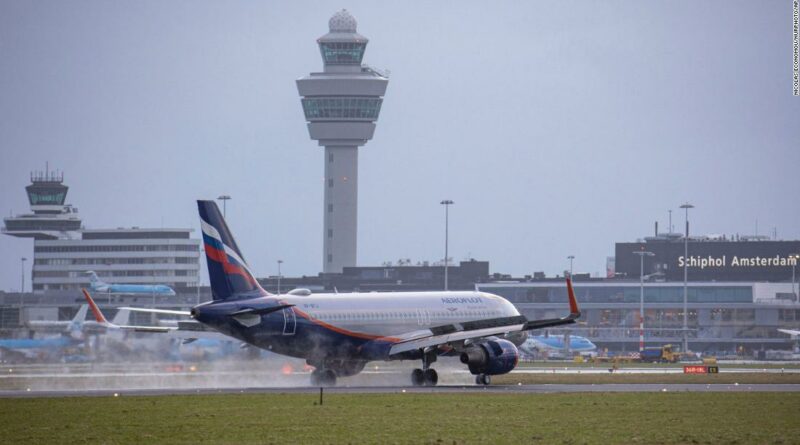Why airline executives are worried about 5G
London/Paris (CNN Business)Major international airlines are canceling flights to the United States over aviation industry fears that 5G technology could interfere with crucial onboard instruments.
But it’s business as usual in Europe, where the latest generation of high speed mobile networks is being rolled out without a hitch.
“The technical data received from EU manufacturers offers no conclusive evidence for immediate safety concerns at this time,” the European Union Aviation Safety Agency (EASA) told CNN Business on Wednesday.
“At this time, EASA is not aware of any in-service incidents caused by 5G interference,” added the regulator, which oversees civil aviation in 31 European countries.
The story is much the same in the United Kingdom, where the Civil Aviation Authority issued a safety notice on Tuesday that said “there have been no confirmed instances where 5G interference has resulted in aircraft system malfunction or unexpected behavior.”
The lack of alarm in Europe stands in stark contrast to the United States, where airlines have warned of catastrophic consequences for aviation and the economy if super-fast 5G mobile service expands without additional safeguards. US airlines and aviation regulators have warned that 5G cellular antennas near airports could distort readings from radar altimeters, which tell pilots how far they are from the ground.
“Any failures or interruptions of [radar altimeters] can … lead to incidents with catastrophic outcome, potentially resulting in multiple fatalities,” the International Air Transport Association (IATA) and the International Federation of Air Line Pilots’ Associations (IFALPA) said in 2020.
Why is there a potential problem in the United States, but not Europe? It comes down to technical details.
Mobile phone companies in the United States are rolling out 5G service in a spectrum of radio waves with frequencies between 3.7 and 3.98 GHz. The companies paid the US government $81 billion in 2021 for the right to use those frequencies, known as the C-Band. But in Europe, 5G services use the slower 3.4 to 3.8 GHz range of spectrum.
The aviation industry is worried that US 5G service is too close to the spectrum used by radar altimeters, which is between 4.2 and 4.4 GHz. Europe does not face the same risk, according to the industry, because there is a much larger buffer between the spectrum used by radar altimeters and 5G.
“If there is no proper mitigation, this risk has the potential for broad impacts to aviation operations in the United States as well as in other regions where the 5G network is being implemented next to the 4.2 to 4.4 GHz frequency band,” IATA and IFALPA said in their statement.
There are other differences in how 5G is being rolled out, according to the US Federal Aviation Administration (FAA). Other countries are using lower power levels, restricting the placement of 5G antennas near airfields and requiring them to be tilted downward to limit potential interference with aircraft.
In France — cited by telecom carriers such as AT&T (T) and Verizon (VZ) as an example of 5G and aviation working seamlessly together — the height of a 5G antenna and the power of its signal determine how close it is allowed to a runway and the flight path of an aircraft, according to a technical note from France’s National Frequency Agency.
The FAA is so concerned about potential interference with altimeters that it issued an urgent order in December forbidding pilots from using altimeters that may be affected around airports where low-visibility conditions would require them. The rule could keep planes from getting to some airports in certain circumstances, because pilots would be unable to land using instruments alone.
EASA acknowledged the FAA’s concerns in December, noting they “address situations specific to operations in USA airspace.” The European regulator has recommended that carriers “consider exposing flight crews to unreliable radio altimeter scenarios” during training and ensure that crews are aware of “the potential degradation in the performance of installed radio altimeters.”
In the United States, differences of opinion over the risk posed by 5G have devolved into a bitter public dispute involving federal regulators as well as aviation and telecom companies. Major carriers including British Airways, Lufthansa (DLAKY) and Emirates have canceled flights to the United States, citing the issue.
“We were not aware that the power of the antennas in the United States [has] been doubled compared to what’s going on elsewhere. We were not aware that the antenna themselves have been put into a vertical position rather than a slight slanting position,” Emirates President Tim Clark told CNN Business on Wednesday.
“So on that basis we took that decision late last night to suspend all our services until we had clarity,” he added.
AT&T, which owns CNN’s parent company, and Verizon both announced Tuesday that they would delay activating 5G on some towers around certain airports. The wireless technology’s rollout near major airports had been scheduled for Wednesday.
“We are frustrated by the FAA’s inability to do what nearly 40 countries have done, which is to safely deploy 5G technology without disrupting aviation services, and we urge it do so in a timely manner,” said Megan Ketterer, a spokesperson for AT&T.
— Chris Liakos contributed reporting.
Source: Read Full Article



